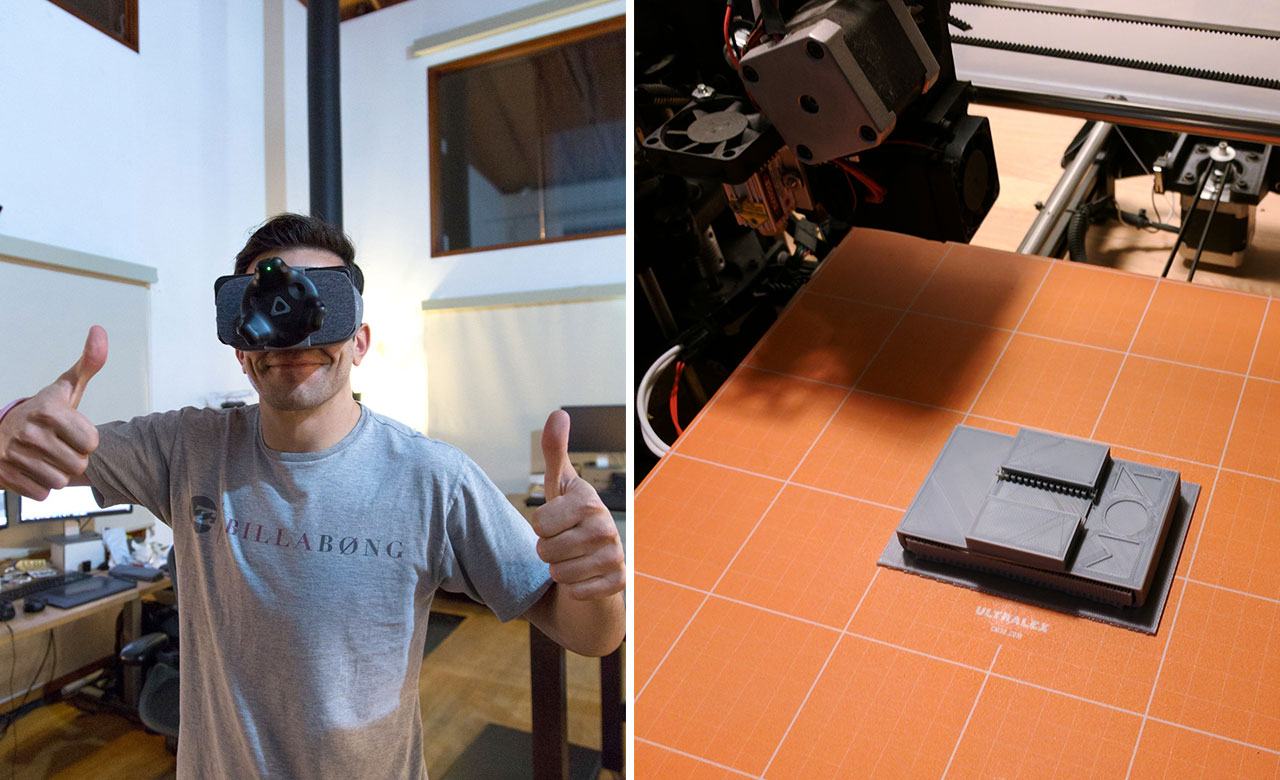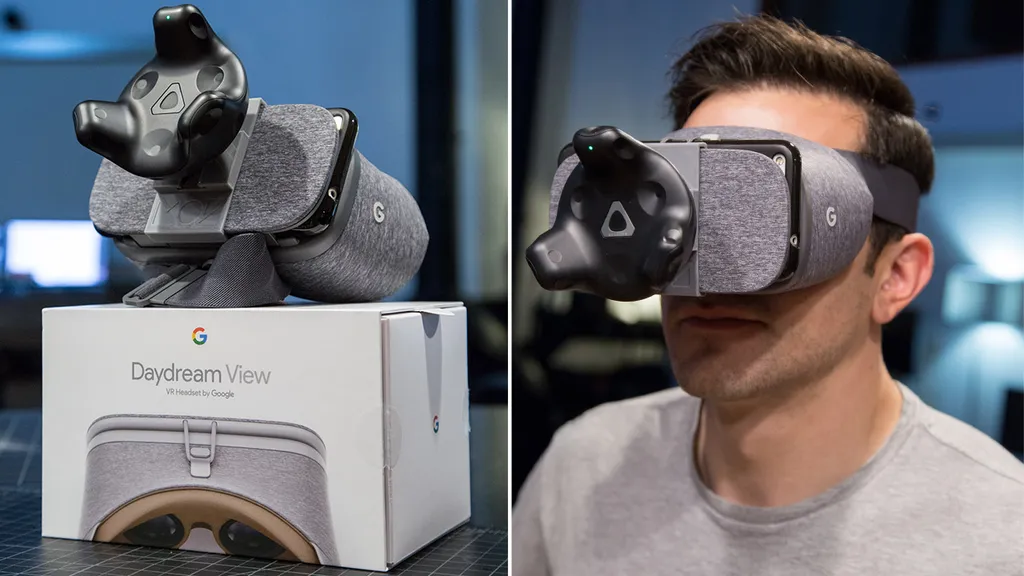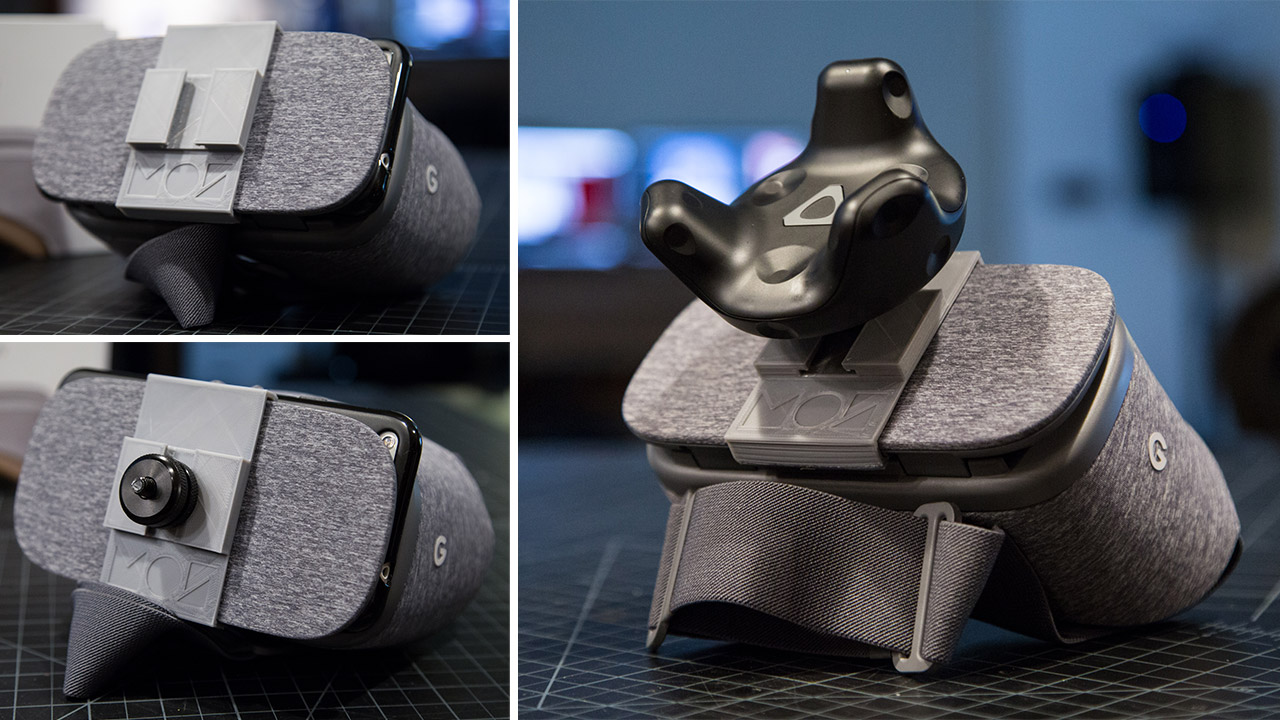Back at CES we met a small creative studio with some big technical plans for the HTC Vive’s upcoming Tracker peripheral.
The team’s name was Master of Shapes, and they were one of the groups that HTC had gathered to showcase some of the many applications for the new device. Specifically, they made a technical demonstration for makeshift local multiplayer VR, called Cover Me. The tracker was attached to a phone, which itself was attached to a gun peripheral, allowing someone to look into a VR user’s world and help them out by shooting enemies. The potential for multiplayer was huge, but it also showcased how the Tracker could be used to make smartphone-based headsets positionally tracked.
At the time, Master of Shapes said that was “fully doable”. Now? It’s been done.
 The team today posted a look at its experiments attaching the Tracker to Google’s Daydream View, a device that doesn’t positionally track a user’s head movements. With a 3D printed mount, the Tracker is stuck on the front of the headset and tracked by the same base stations that track the Vive itself. The team’s work on Cover Me meant it had already figured out how to translate the Tracker’s positional data to Android phones, thus it was quickly able to make a true mobile room scale VR experience.
The team today posted a look at its experiments attaching the Tracker to Google’s Daydream View, a device that doesn’t positionally track a user’s head movements. With a 3D printed mount, the Tracker is stuck on the front of the headset and tracked by the same base stations that track the Vive itself. The team’s work on Cover Me meant it had already figured out how to translate the Tracker’s positional data to Android phones, thus it was quickly able to make a true mobile room scale VR experience.
In the blog, Creative Director Adam Amaral noted that the experience wasn’t as solid as the traditional Vive setup and, since there are no Daydream games that have implemented positional tracking tech, the team used its demo for Cover Me instead.
“I will say the daydream with added room scale is pretty awesome,” Amaral wrote. “There is something really cool about having no tether and sharper resolution.”
The concept is purely experimental, but Master of Shapes plans to keep on with the experimentation. Speaking to UploadVR, Amaral said the team was also going to look at attaching the device to Daydream’s remote controller, which currently offers tracking in only a few directions. In theory, adding the Tracker to the device could make it a fully tracked device akin to Vive’s own wands. He also teased that the company has been using the Tracker with a phone supported by Google’s Tango 3D mapping tech too.
This could also turn Cover Me itself from a game in which one player is in VR, and one is using a phone, to two players being fully in VR. People with both a Vive and a smartphone-based headset could experience new types of VR content.
We’re not sure how viable the concept is in the market, but it’s still a fascinating concept. The Vive Tracker is expected to release in Q2, and there are plenty of developers that want to get their hands on it.



























